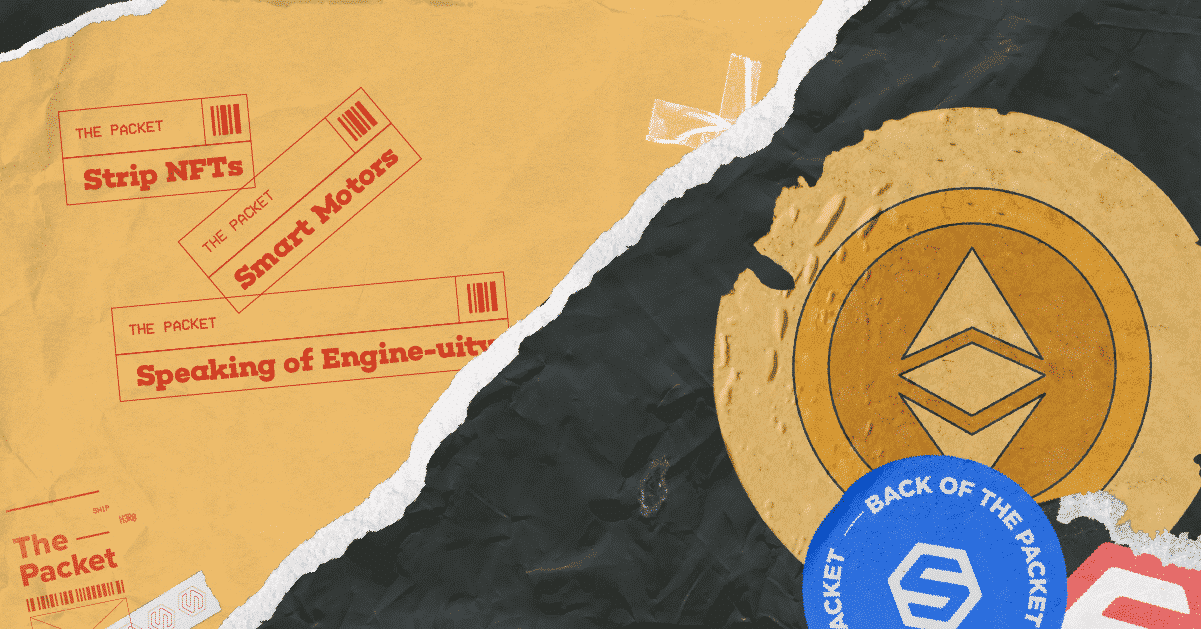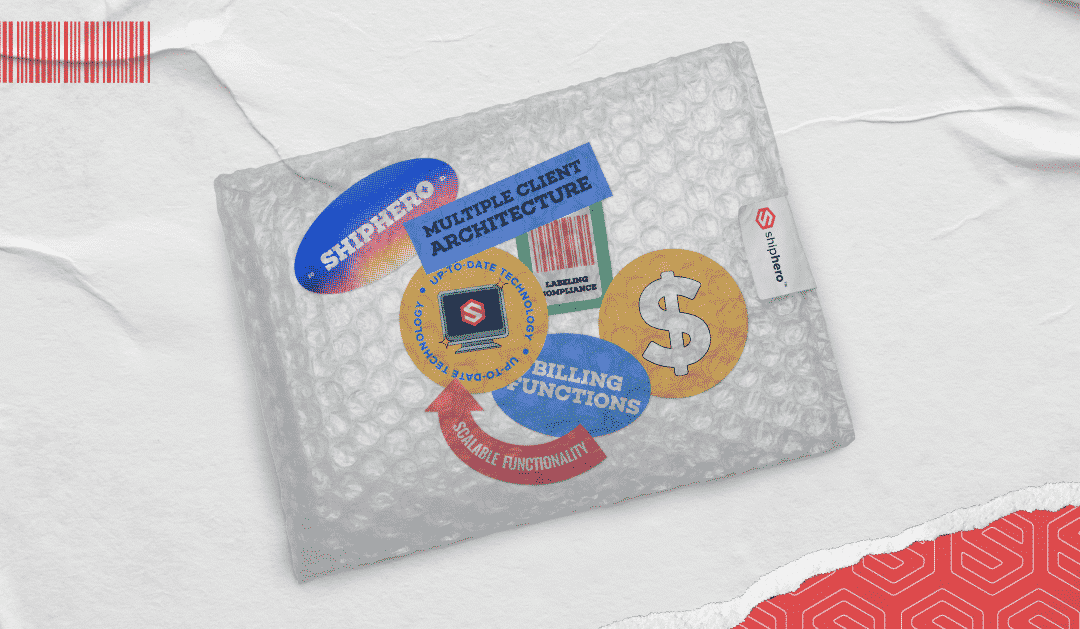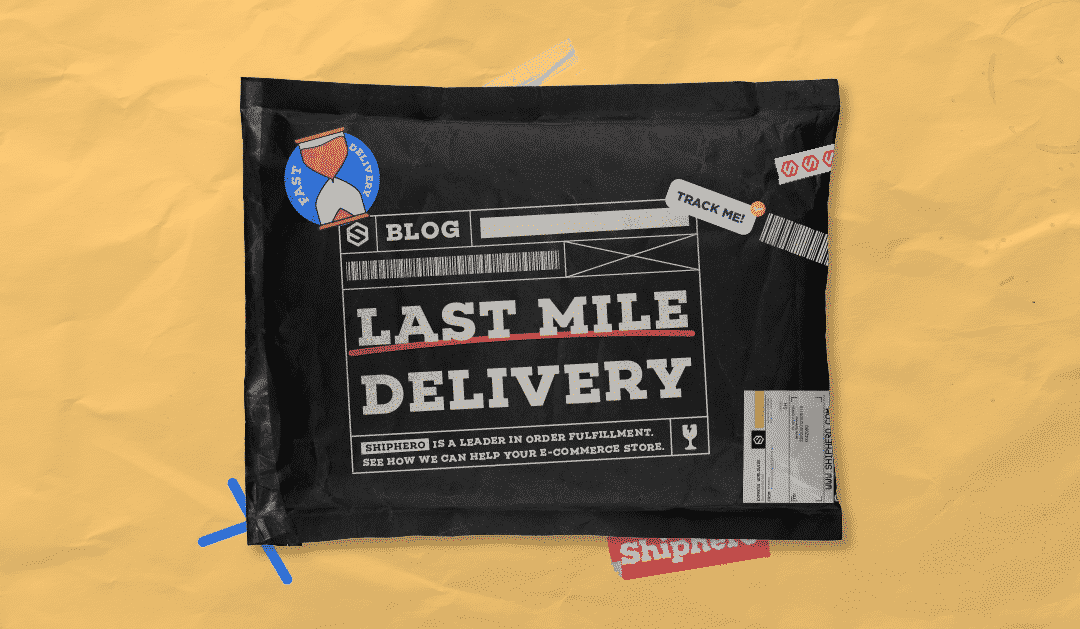
Apr 13, 2021 | Blog, The Packet
The Rise of E-Crime
This week, hackers released a database of personal data on over 533 million Facebook users, including emails, phone numbers and more (You can check to see if you were part of the leak here). Security experts say that this information has been available on dark-web for a while, and this recent “leak” is just a large accumulation of previously leaked data.
Am I in trouble?
Because this information is not new to hackers on the dark web, you may not experience an increase in theft attempts to you as a person; however, this large, aggregated leak is a treasure trove for hackers and cyber criminals hoping to steal from e-commerce companies.
Oh dang.
In 2020 alone, Sift estimates that more than $1 trillion was lost globally due to cybercrime. According to the same report, 62% of all payment fraud took place on a mobile device, and 45% of the U.S. e-commerce market was conducted on mobile devices in 2020. The perps mainly used ransom-ware attacks (taking control of a company’s systems and extorting them for money) or by using email-delivered malware to learn passwords and siphon funds.
Who are they targeting?
Transportation was the top targeted vertical, with reports of coordinated efforts to steal food/liquor deliveries in broad daylight. Also, loyalty businesses was the top targeted industry with a 275% increase in fraud attempts.
Where does this money go?
Video games mostly… actually. The top item purchased by cybercriminals is video game currency, followed by cryptocurrencies and site credits.

Strip NFTs
After 83 years, the major-league trading card company, Topps, announced plans to go public in a SPAC merger valued at $1.3B. The recent NFT-craze allows Topps to link collectibles to digital tokens, then receive payouts through Smart Contracts for the second-hand market sales — like the Mickey Mantle card that just sold for $5 million (which Topps made a whopping $.05 on over 70 years ago). Beyond sports, Topps has forged partnerships with Marvel and Star Wars to branch into the collectibles market.
Smart Motors
Turntide Technologies says it’s able to use recent advances in machine learning, software and electronics to create highly efficient motors that greatly cut carbon emissions. Buildings owned by BMW, JLL and Five guys, as well as cooling systems on dairy farms, already use this smart motor to reduce their carbon footprint, and companies that have retrofitted old motors with this smart motor have cut their HVAC motor energy consumption by 64% on average. If scaled out to replace all motors, Turntide says it could eliminate 25% of global carbon emission.
Speaking of Engine-uity
NASA’s Mars Helicopter, Ingenuity, has survived its first Martian night and is sending miraculous pictures of the Red Planet, which (spoiler) don’t look too red.
ShipHero News
How To Create Content for Your E-commerce Business – Part 1: Video
The very first step to marketing your e-commerce store is simple: content creation. In the world of SEO, social media, and online sales, check out our blog to find out what it takes to create authentic and engaging video content that builds trust with your customer base.
The Fulfillment Innovation Wheel: Data Now
It’s your data, and you need it now! Reporting & Analytics has never been more important to your e-commerce warehouse operations. Find out the KPIs and reports you need to make to stay competitive, in our newest blog for ShipHero’s Fulfillment Innovation Wheel series – Data Now.

Apr 8, 2021 | 3PL Warehouse Management, Blog
Order fulfillment is a complex process involving multiple stages such as picking, packing, processing, and shipping customer orders. The smooth operation of these stages is crucial to prevent customer complaints and maintain a high level of customer service. One very cost effective way to manage inventory and streamline the order fulfillment process is by leveraging the expertise of a third-party logistics (3PL) company.
These companies, often referred to as experts in the field, offer access to 3PL software that automates many aspects of the logistics process, enhancing efficiency and reducing errors.
This article will delve into the role of 3PL software and the factors to consider when choosing a top 3PL provider or one, including the consideration of your business requirements, budget, and business goals.
Understanding 3PL Warehouse Management Systems
A 3PL warehouse and inventory management system is a software solution designed to aid in a company’s logistics operations. A 3PL system’s key features include warehouse task and inventory management, detailed processes for picking, packing, and shipping goods, delivery tracking, and shipping route optimization.
The level of automation provided by these systems can significantly improve warehouse operations, ensuring that items are managed efficiently and errors are minimized. These systems are particularly beneficial for large warehouses where manual inventory management can be time-consuming and prone to errors.
The Case for 3PL Software in Small Businesses
3PL software brings numerous benefits to small businesses, including the ability to streamline processes and manage sales, service and inventory levels effectively. Here are some reasons why small businesses should consider implementing 3PL software:
Efficiency and Cost Savings
3PL software can automate tasks such as order tracking, invoice generation, and payment processing, saving significant time and reducing the need for additional employees, thereby cutting operational costs. This efficiency can also improve the customer experience, as orders can be processed and shipped more quickly. In times of high demand, this efficiency can be particularly beneficial.
Minimizing Human Error
Manual data entry and processing can lead to errors, especially when information passes through multiple hands. 3PL software automates these processes, reducing the likelihood of costly mistakes. This automation can save time and also improve the quality of good customer service being provided to customers.
Meeting Diverse Business Needs
Different businesses have different needs, and 3PL software offers the flexibility to customize features according to these business needs. As your business grows, you can scale up the software by adding extra features. This scalability can accommodate the demands of growing retailers and ensure that the software continues to continuously improve to meet their needs.
Informed Decision Making
3PL software comes with reporting tools that provide insights into inventory levels, staff performance, and other crucial business information. These reports enable you to make better decisions based on accurate, real-time data. This data can also be used to inform product development efforts and improve customer relationship management (CRM) strategies.
The Advantages of Using 3PL Software
The success of your own third party logistics partner, provider partner or business largely depends on client satisfaction. In today’s marketplaces, customers expect their orders to arrive promptly and appreciate the ability to track their orders throughout the shipping process. For small businesses, these operations can often be managed in-house, but for larger businesses with high-volume supply chain operations, forming a partnership with a third party logistics partner or a 3PL provider can ensure accuracy and efficiency. Here are some benefits of using 3PL software ecommerce business:
Automation Saves Time
3PL software can automate various tasks and integrate processes, saving time for both the logistics services providers and their clients. For example, integrations with eCommerce platforms like Shopify and Amazon can automatically capture orders and add the information directly into your database.
This automation can also improve the customer experience, as customers can receive updates on their orders in real time.
Cost Reduction
The automation capabilities of 3PL software can reduce costs for logistics and warehousing providers by reducing the need for data entry clerks. These cost savings for a supply chain and logistics company can then translate into lower shipping and warehousing costs for clients. This cost-effectiveness is particularly important for businesses operating on a tight budget.
Error Reduction
Manual handling of different stages of the order fulfillment process can increase the risk of errors. 3PL software automates data storage and processing, reducing the likelihood of costly human errors. This automation can save money and also improve the quality of service provided to customers.
Customization and Scalability
3PL software can be customized and scaled to suit the needs of both supply chain management or individual clients, making it easier to manage changes such as adding inventory, opening a new distribution center, or entering a new market. This scalability is particularly important for businesses experiencing rapid growth.
Business Insight
3PL software reports on the entire supply chain activity of most companies, from production to shipping, providing visibility into any part of the business at any time.
This visibility can help businesses to manage their own supply chain, other supply chains, and SKUs effectively and ensure that they have the capacity to meet customer demands.
Increased Transparency
Entrusting a 3PL partner or logistics partner with your company reputation entire supply chain can be daunting. However, 3PL software and services like ShipHero provides full visibility into logistics performance and current inventory levels from reliable partners, ensuring everything is running smoothly. This transparency can also improve the customer experience, as customers can track their orders in real time.
Enhanced Customer Support
3PL software can track orders and payments from start to finish, allowing customers to track shipments in real-time and easily make returns. The software also enables the company to offer expedited shipping options like same-day and two-day shipping. This level of customer service can enhance the company’ customer experience and improve customer retention.
Every business is unique, and using 3PL software services may be more beneficial for some companies than others. If you’re considering transitioning your business to third-party logistics services, it’s important to know what to look for when shopping for 3PL software solutions.
Key Considerations When Choosing 3PL Software
When working with a third party logistics provider or third party logistics providers because of third party logistics providers third-party logistics companies, clients entrust the entire order fulfillment process to another entity. Making the wrong choice could cost your company in the long run, potentially leading to client loss and business challenges. Here are some factors to consider when looking for the best 3PL software:
Advanced Technology
Your third party logistics provider or chosen 3PL provider partner should have access to the latest technology. Advanced 3PL software can save you money and reduce errors through automation.
This technology should include enterprise resource planning (ERP) and transportation management systems (TMS) to ensure comprehensive management of your third party logistics operations.
Scalability
Many businesses outsource to a 3PL company when they’ve outgrown the capabilities of their in-house logistics department. If you plan to work with growing companies, choose 3PL software that can scale with their future business too.
Also, consider the capacity of the logistics partner and the software to handle increasing numbers of SKUs and items.
Compliance with Packaging and Labeling Standards
Logistics businesses need to comply with certain rules and regulations regarding product packaging and labeling. Good 3PL software can help you meet these requirements and prevent future issues. This compliance is particularly important to protect the rights of consumers and ensure that goods are correctly labeled.
Support for Multiple Client Accounts
In a single company, there may be several users of 3PL software as each division needs real-time access to the stored data. Good 3PL software should offer multiple user accounts so people from different divisions can log into the app simultaneously. This feature can improve collaboration and ensure that all employees have access to the information they need.
Invoicing Features
Most 3PL technology solutions include billing functions to ensure that invoices are paid out properly. This type of software automates put away, receiving, storage, and shipping, ensuring that charges for these services are always accurate and on time. This automation can also improve the customer experience, as customers can receive timely and accurate invoices.
Value for Money
Many clients work with 3PL providers to avoid the cost of logistics software. To provide your clients with the best value and service, choose a top 3PL partner or logistics partner, with software that offers advanced features at an affordable price. This value for money is particularly important for businesses operating on a tight budget.
There are many 3PL software options on the market catering to different needs. If you’re planning to become a 3PL provider, research the type of logistics software your potential clients prefer and match your software to the client’s needs.
The Bottom Line
The key to finding the best 3PL software partner is to take the time to examine your company’s needs and find a software partner and solution to meet them. Don’t forget to include the option for customization and scalability as well.
And remember, the things to consider when choosing a 3PL partner is not just about the software they provide and prioritize customer service, but also about the quality of their technology connecting their customer service, their ability to answer your questions, and their commitment to training their staff to meet your needs.
In the era of online shopping, shoppers have high expectations for fast and accurate delivery. This is where the role of a 3PL platform provider comes into play. A good 3PL platform provider will not only ensure the logistics company ensures efficient transportation of goods but the provider will also provide real-time tracking for shoppers, enhancing their shopping experience.


Apr 7, 2021 | Blog, Fulfillment
As online shopping grows in popularity and ubiquity, retailers and logistics providers have tried to find innovative ways to fulfill consumer expectations. While order fulfillment is still the backbone of retail businesses, today’s customers want fast delivery times. Thus, the main challenge for businesses is to deliver fast while keeping costs low.
The modern customer’s expectations of fast delivery come from online retail speed. By choosing products and finishing purchases with the click of a single button, they get into the mindset that their purchases should be delivered quickly. That’s why ensuring your product arrives at the customer’s door as soon as possible is essential to maintaining customer satisfaction.
Order fulfillment starts when the customer puts the order in and finishes when the item arrives at their door. For most companies, the final leg of the fulfillment process, often called last mile delivery, is the most challenging and expensive.
Keep reading to learn more about last mile delivery and how you can use it to optimize order fulfillment.
Understanding Last Mile Delivery
Last mile delivery is the final part of the order fulfillment process, where a product leaves the warehouse on the way to its final destination: the customer’s home, in most cases. The key challenge of last mile delivery is to ship items as fast as possible while keeping expenses down.
Last Mile Delivery in eCommerce
Last mile delivery can make or break an eCommerce retailer because the customer can find other stores that offer faster or cheaper shipping if you don’t fulfill their expectations. Unfortunately, last mile logistics are expensive – sometimes taking up more than half your logistics costs.
Online retailers and third-party logistics (3PL) companies usually face a dilemma regarding last mile delivery. To offer free or low-cost shipping, they must pay for delivery out of pocket or impose order minimums to cover costs.
Factors That Influence Last Mile Delivery
When you shop online, you may notice a gap between your item being marked “out for delivery” and arriving at your doorstep. This gap and lack of transparency signify an inefficiency in the last mile delivery process.
The last leg of order fulfillment operations usually involves an independent shipping carrier delivering the package from your warehouse to the customer. Several factors influence how long this process takes, such as:
- Shipping company or 3PL provider size
- Number of orders it handles daily
- Carrier pickup frequency
- Distance between fulfillment center and recipient
- Area characteristics (e.g., rural or urban regions)
- Number of deliveries/stops along the route
These hindrances to last mile delivery are usually out of your control and influence shipping times differently. For instance, smaller 3PL companies in rural regions may pick up items every two or three days, while larger logistics providers in urban regions typically schedule multiple pickups daily.
Last mile delivery is becoming necessary as eCommerce gains more ground in the United States. Moreover, the increased popularity of the free shipping movement means more pressure for you to foot the bill or implement minimum purchase amounts to reduce expenses.
Recent Last Mile Delivery and eCommerce Trends
The eCommerce scene is constantly evolving, so online retailers and 3PL companies have to change along with it. Adapting to the latest industry trends lets you capitalize on new opportunities and optimize your fulfillment strategy according to consumer demand.
Here are some eCommerce and order fulfillment trends you should watch out for:
- Crowdsourcing and gig economy
- Instant order fulfillment
- Rise of USPS carrier services
- In-house shipping carriers
- Last mile delivery upselling
- Smart and predictive technology
- Fulfillment networks
- Real-time package tracking and delivery updates
- Autonomous delivery vehicles
- Predictive shipping
Let’s dive into each trend and see how they can influence last mile delivery and other aspects of your business.
1. Crowdsourcing and Gig Economy
Crowdsourcing and gig-based delivery services have been rising these past few years. In addition to transport, companies like Uber and Postmates offer delivery jobs to their independent driving partners. While this system is less predictable than traditional route-managed delivery systems, it’s a flexible alternative that companies can use whenever they need something delivered quickly.
2. Instant Order Fulfillment
Thanks to the ubiquity of the Internet and online retail, people can find the products they need within minutes. As the purchase process becomes faster, customers expect fast delivery, resulting in high demand for same-day, one-day and two-day shipping.
As an online retailer or 3PL provider, you most likely use warehouse management software to assist in order fulfillment. However, even the most advanced software has limitations. You must work extra hard to provide same-day order fulfillment if you work in fast-moving industries like pharmaceuticals or food & beverage.
3. Rise of USPS Carrier Services
While private shipping carriers like UPS and DHL are still the most popular shipping choices for online retailers and 3PL companies, the United States Postal Service is also gaining some ground in this field. The USPS has started delivering eCommerce packages to compensate for declining traditional mail deliveries.
USPS often offers free package pickups, making them a strong choice for retailers and 3PL companies who want to save money.
4. In-House Shipping Carriers
Some retailers and logistics providers save money by using their own company vehicles and offering in-house delivery services. While cheaper, this shipping method is only viable in your company’s immediate area.
5. Last Mile Delivery Upselling
Most retailers already upsell on their product pages, but some are adopting last-minute upselling. With predictive technology, companies can guess what other products customers might want and offer them at checkout.
Some companies take upselling even further and stock their delivery vans with items the customer might want, so they can sell an additional item in person. Because this upselling method hinges on impulse purchases, it’s mostly implemented in food delivery.
6. Smart and Predictive Technology
Modern technology benefits both sides of the eCommerce coin. Customers know where their items are at all times through real-time tracking, and they can even monitor their status through temperature and humidity sensors.
Meanwhile, smart technology predicts the weather for retailers and 3PL providers to ensure that perishable and easily-damaged items aren’t compromised.
7. Fulfillment Networks
One of the best ways to improve delivery times and offer same-day delivery is to expand your fulfillment center network. Amazon, which is capable of two-hour deliveries, is one of the prime examples of great fulfillment center usage.
While most fulfillment center networks aren’t as big as Amazon, many companies rent warehouse space out in major cities to provide faster delivery.
8. Real-Time Package Tracking and Delivery Updates
Modern customers expect to receive orders quickly and track the entire shipping process. Fortunately, tracking technology makes real-time product shipping updates possible, giving your customer base complete visibility from when their item ships to when it arrives at their door.
9. Autonomous Delivery Vehicles
The availability of delivery drivers dictates shipping times. Since drivers are human and labor shortages happen, you can’t expect them to deliver goods 24/7. However, recent developments in self-driving cars and drones might mean that 24/7 delivery will eventually be a thing.
There are many gray areas regarding regulations and rules, but there’s also potential in self-driving delivery vehicles. Amazon has already invested $530 million into self-driving cars. Additionally, Amazon debuted the Amazon Scout delivery drone in 2019, with trials as recent as 2020.
10. Predictive Shipping
Reducing delivery times is the most common way to decrease last-mile shipping costs. But what if there’s almost no delivery time at all?
Major online retailers like Amazon are trying predictive shipping, which anticipates product demand based on consumer shopping habits. These companies often use predictive algorithms to determine high-demand seasons for certain items (e.g., fireworks leading up to the Fourth of July) and pre-ship items to local warehouses in anticipation of these demand spikes. This cuts down on delivery time and cost because the products are already halfway there.
Distributor Storage With Last Mile Delivery
Distributor storage is an integral part of last mile delivery. Most fulfillment companies or last mile delivery providers have a network of fulfillment centers where they store your products before shipping them out to customers.
When picking a 3PL provider, look for one with a good spread of fulfillment centers so you can offer high delivery speeds anywhere in the country.
Top Last Mile Delivery Companies
Last mile delivery companies ship items from fulfillment centers to customers. Different companies offer different benefits, so choose wisely.
Here are four great delivery companies used by many businesses and 3PL providers:
FedEx
FedEx is one of America’s biggest shipping companies, delivering packages all over the planet. It’s one of the best options if you’re looking for fast package deliveries and detailed shipment trackers.
However, FedEx’s rates are often higher compared to its peers.
UPS
UPS is another favorite among online retailers because it offers weekend pickups and deliveries. This company also provides same-day and next-day deliveries, which are indispensable for when your customers need their purchases delivered quickly. Moreover, UPS offers a high-volume discount if you’re shipping many packages simultaneously.
But while UPS offers affordable rates for small packages, you may need to pay extra fees and surcharges for heavier items.
DHL
DHL’s global presence means you can easily ship anywhere in the world. DHL also boasts great customer service with quick issue resolution and free pickup fees.
However, DHL doesn’t have a strong American presence compared to its counterparts, so finding a DHL office stateside may be a little more challenging.
USPS
USPS is one of your best options for small and lightweight packages, thanks to its low rates. With Saturday delivery and free home pickups, USPS is perfect for new online retailers who can’t spend too much on shipping.
Unfortunately, USPS doesn’t have a strong tracking system, so customers might not get full shipping transparency. Its customer service has also gotten a bad rap because of numerous unresolved issues.
How ShipHero Improves Logistics and Fulfillment
ShipHero is one of the best 3PL companies for eCommerce business owners. We outsource order fulfillment for over 5,000 stores to boost their shipping times and foster growth.
Here’s why you should choose ShipHero as your 3PL.
Distributed Fulfillment Centers
Keeping your entire stock in one warehouse may lead to high fulfillment costs and shipping delays. At ShipHero, we use distributed fulfillment centers to store your products at warehouses across the country. When your store receives an order, we forward it to the nearest fulfillment center to ensure faster and cheaper delivery.
Shipping Discounts
ShipHero has negotiated shipping discounts with carriers like UPS, USPS, FedEx, DHL and more. This lets us pass the discounts on to you, so you spend less on shipping.
2-Day Delivery and Overnight Delivery Capabilities
Want to build brand loyalty on par with Amazon and grow your market share? ShipHero lets merchants offer 2-day and overnight delivery to help compete with Amazon FBA sellers and other major retailers.
Conclusion
The solution to last mile delivery challenges is not one-size-fits-all. An online retailer or third-party logistics provider may find that a combination of improved technology and analytics could be the solution to rising last mile delivery costs.
There’s no singular solution for last mile delivery issues and challenges. However, using the right technology and analyzing relevant data helps your company develop the best cost-saving measures.
No matter your line of business, last mile delivery is an integral part of it. Always watch the trends and developments to capitalize on new cost-saving opportunities and measures.
ShipHero is a leader in order fulfillment. Contact us today to learn how we can help your eCommerce store.
Last Mile Delivery for eCommerce FAQs
What is eCommerce order fulfillment?
eCommerce order fulfillment encompasses the entire process of taking your product from the factory floor to the customer’s doorstep. Order fulfillment involves your supplier, warehouse manager, 3PL providers and shipping carrier.
What is the difference between drop shipping vs order fulfillment?
The key difference between drop shipping and order fulfillment is the party handling the order. With drop shipping, orders are delivered directly from the manufacturer or supplier. With order fulfillment, purchases are handled by the merchant or 3PL providers.
What are the bottlenecks in the order fulfillment process?
There are many bottlenecks in the order fulfillment process, like inaccurate orders, long packing times and courier delays. To eliminate these bottlenecks, examine your order fulfillment process and identify the cause before engineering a solution.
–
About ShipHero: We make it simple for you to deliver your eCommerce. Our software helps you run your warehouse, and our outsourced shipping solutions eliminate the hassle of getting your products to your customers. With over 5,000 brands and 3PLs relying on us daily, we’re here to help with all your logistics needs.
Let us know how we can help you today by scheduling a call HERE.






